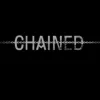Take a look inside 4 images
Chained
Pros: Unique puzzles and a beautifully designed environment.
Cons: Glitches and bugs frequently render the game unplayable.
Bottom Line: If you can get past the bugs, Chained is a great way to both explore metaphor and symbolism and facilitate conversations about heavy topics like guilt, loss, and how to deal with emotions.
Teachers can treat Chained as a novel or short story, encouraging students to look for evidence to support their viewpoints and use strategies for textual analysis. While teachers could certainly have students complete such traditional activities as essay writing around Chained, this game can also be used in other ways. For example, students could write short stories explaining what happened to the character before the game's beginning. They could create dramas in which they show how a student their own age might become "chained" by an experience, or they could create artwork inspired by the game's rich scenery.
Chained, a game created as a senior project by a group of game-design students, puts players in the role of a young man chained to ... something. Players start the game shackled to a heavy iron ball. This is intentionally frustrating at first -- it prohibits players from running, forcing the character to shuffle slowly. Soon, though, the ball becomes a tool: It can be used to advance through the game, smashing down barriers and obstacles. The ball can even be thrown onto an unreachable ledge and the chain used as a rope to climb.
It's fascinating and thought-provoking, with beautifully designed levels rich with metaphor in which the players destroy elements of the protagonist's life -- his home, his family, and the like -- to progress. Unfortunately, frequent glitches and bugs often make the game unplayable.
On its own, Chained provides a challenging puzzle-solving experience. When analyzed like a novel, however, it can become a very powerful undertaking. Because the ball and chain symbol is never explicitly called out, there are excellent opportunities for students to discuss what it all means. And there are a lot of possible interpretations. In some ways, the character's burden is useful -- without it, he can't move forward. But at the same time, it's clearly destroying his relationships. Throughout the game, it becomes obvious that the chains have alienated the protagonist from his family. Students will be able to have deep discussions about what that chain could be -- addictions, anger, past relationships, or something else.










